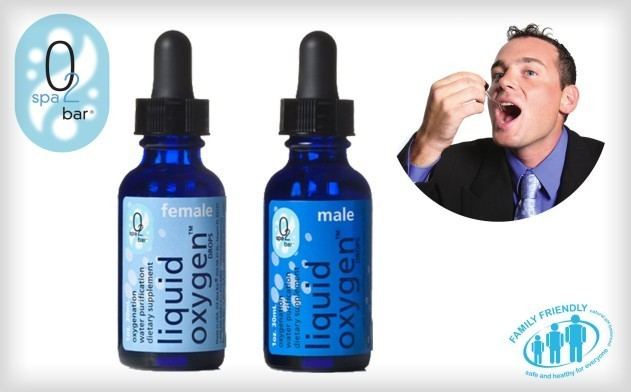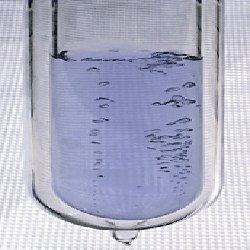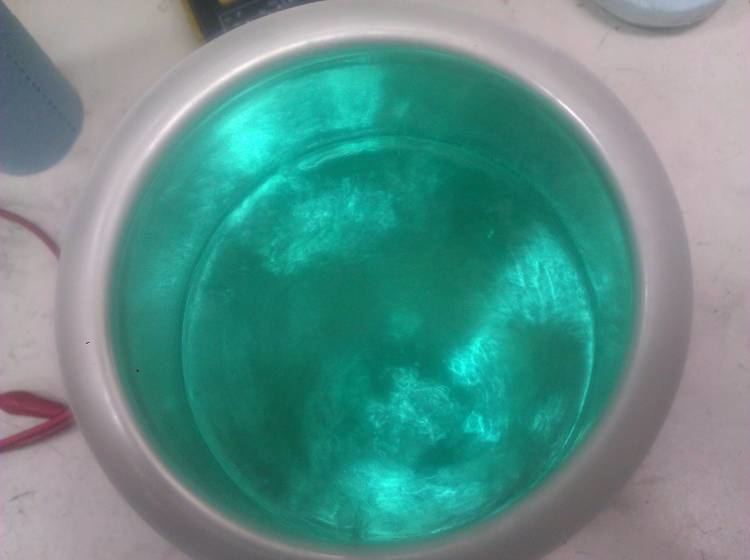Making and playing with liquid oxygen
Liquid oxygen—abbreviated LOx, LOX or Lox in the aerospace, submarine and gas industries—is one of the physical forms of elemental oxygen.
Contents
- Making and playing with liquid oxygen
- Dropping a can of liquid oxygen into burning oil
- Physical properties
- Uses
- History
- References
Dropping a can of liquid oxygen into burning oil
Physical properties

Liquid oxygen has a pale blue color and is strongly paramagnetic: it can be suspended between the poles of a powerful horseshoe magnet. Liquid oxygen has a density of 1.141 g/cm3 (1.141 kg/L or 1141 kg/m3) and is cryogenic with a freezing point of 54.36 K (−218.79 °C; −361.82 °F) and a boiling point of 90.19 K (−182.96 °C; −297.33 °F) at 101.325 kPa (760 mmHg). Liquid oxygen has an expansion ratio of 1:861 under 1 standard atmosphere (100 kPa) and 20 °C (68 °F), and because of this, it is used in some commercial and military aircraft as transportable source of breathing oxygen.

Because of its cryogenic nature, liquid oxygen can cause the materials it touches to become extremely brittle. Liquid oxygen is also a very powerful oxidizing agent: organic materials will burn rapidly and energetically in liquid oxygen. Further, if soaked in liquid oxygen, some materials such as coal briquettes, carbon black, etc., can detonate unpredictably from sources of ignition such as flames, sparks or impact from light blows. Petrochemicals, including asphalt, often exhibit this behavior.

The tetraoxygen molecule (O4) was first predicted in 1924 by Gilbert N. Lewis, who proposed it to explain why liquid oxygen defied Curie's law. Modern computer simulations indicate that although there are no stable O4 molecules in liquid oxygen, O2 molecules do tend to associate in pairs with antiparallel spins, forming transient O4 units.

Liquid nitrogen has a lower boiling point at −196 °C (77 K) than oxygen's −183 °C (90 K), and vessels containing liquid nitrogen can condense oxygen from air: when most of the nitrogen has evaporated from such a vessel there is a risk that liquid oxygen remaining can react violently with organic material. Conversely, liquid nitrogen or liquid air can be oxygen-enriched by letting it stand in open air; atmospheric oxygen dissolves in it, while nitrogen evaporates preferentially.
Uses
In commerce, liquid oxygen is classified as an industrial gas and is widely used for industrial and medical purposes. Liquid oxygen is obtained from the oxygen found naturally in air by fractional distillation in a cryogenic air separation plant.

Liquid oxygen is a common cryogenic liquid oxidizer propellant for spacecraft rocket applications, usually in combination with liquid hydrogen, kerosene or methane. Liquid oxygen is useful in this role because it creates a high specific impulse. It was used in the very first rocket applications like the V2 missile (under the name A-Stoff and Sauerstoff) and Redstone, R-7 Semyorka, Atlas boosters, and the ascent stages of the Apollo Saturn rockets. Liquid oxygen was also used in some early ICBMs, although more modern ICBMs do not use liquid oxygen because its cryogenic properties and need for regular replenishment to replace boiloff make it harder to maintain and launch quickly. Many modern rockets use liquid oxygen, including the main engines on the now-retired Space Shuttle.
U.S. Army has long recognized the strategic importance of liquid oxygen, both as a fuel and as a supply of gaseous oxygen for breathing in hospitals and high-altitude aircraft flights. In 1985 it started a program of building its own oxygen-generation facilities at all major consumption bases.
